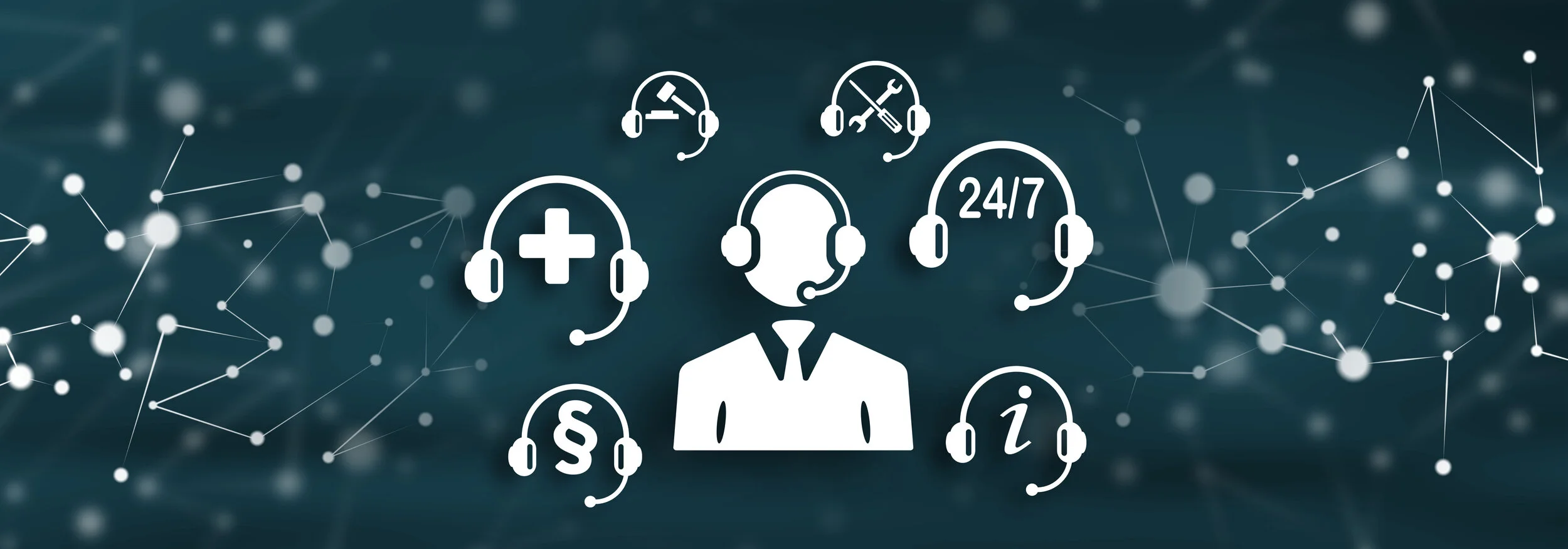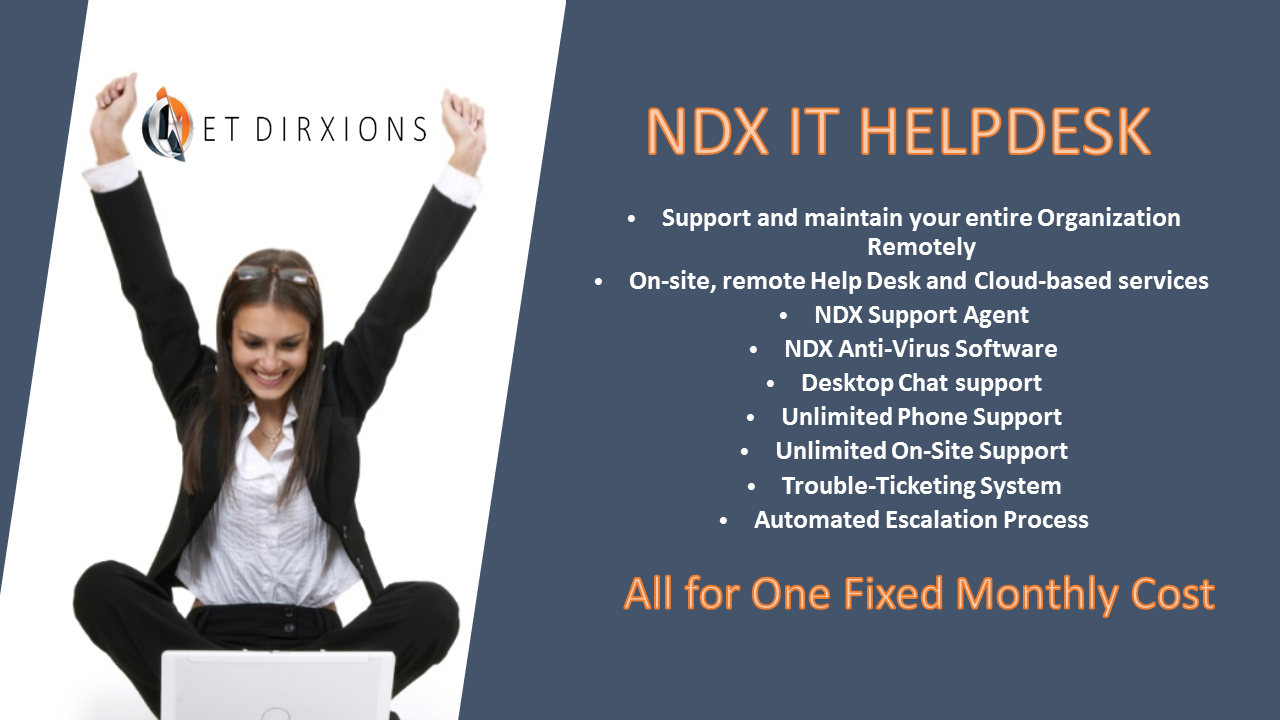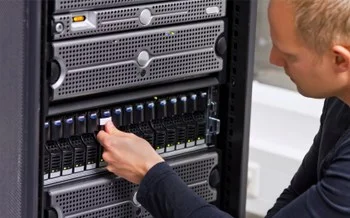Net DirXions Help Desk and Managed IT Services
Full Problem Resolution & Expert Customer Service
In the world of IT, problems happen. Computers crash, passwords are lost, email stops working, and the list goes on. And without proper technical support in place, these problems can bring your business to an abrupt – and potentially damaging – halt.
With Net DirXions’s Help Desk, you can enjoy peace of mind knowing that our certified technicians can quickly and efficiently resolve even your most complex technical problems.
Proactive Care & Maintenance
Not every support issue can be called a catastrophe…until it prevents you from being able to do your job. We’re here to help you stay ahead of the curve, so you can focus on growing your business – and to do so, we’ve adopted a proactive approach to network monitoring and IT maintenance.
That’s why our help desk is a seamless extension of our remote monitoring platform. So when you call to report an issue, there’s a good chance we’re already aware of the problem you’re experiencing – and are actively working to resolve it.
Our technicians receive regular training, coaching and quality review to continuously sharpen their skills, and they’re backed by a team of professional supervisors and managers to ensure consistency and unmatched service delivery. Our technology certifications include:
• Microsoft and Apple desktop operating systems
• Microsoft Office and leading third-party applications
• E-mail applications and Web browsers
• Thin clients and virtual desktop infrastructure (VDI)
• Hardware and network troubleshooting
• Printer installation and support
• Mobile phones and tablets
• User administration
• Desktop performance problems
• Virus and malware infections
Net DirXions Help Desk Support
You’re on a deadline and a client is getting antsy, or you’re putting the finishing touches on a sales presentation. Suddenly, a vital piece of technology goes haywire. What do you do? Call the software maker? The hardware manufacturer? Do you try Google for an answer?
Net DirXions Company Introduction
Net DirXions (NDX), is a managed service provider that helps small to medium sized organizations, companies or firms, with their technology needs. We provide hosting solutions for your servers, business software, and phones. Our Helpdesk provides 24/7/365 support.
Inquiring SMBs Want to Know… What’s the Difference Between a Help Desk and NOC?
Inquiring SMBs Want to Know… What’s the Difference Between a Help Desk and NOC?
It’s no secret that any growing small-to-medium sized business must monitor and manage its business technology in the most cost-efficient way. The tricky part is figuring out how to do this without sacrificing the overall experience of the end-user. End-users can be clients and customers or employees. Both rely on the efficiency of a firm’s network, servers, and applications, and the availability of the company’s data center.
Thanks to the evolution of managed services, it’s actually possible these days to reduce costs, which strengthens IT support and infrastructure. It’s just a matter optimally integrating all available resources.
It’s a Staffing Conundrum for Most SMBs
Most SMBs tend to be short staffed. This isn’t just another reference to the many SMBs with little to no onsite tech support. While that’s true, and problematic, it’s actually all operations that tend to be short staffed.
Small yet growing companies and organizations aren’t just short on tech support; it seems like even their administrative assistant needs an assistant to keep up. Customer support and sales teams are also overworked, and often hindered by having to understand and troubleshoot tech problems when they have no tech expertise whatsoever.
There is no, “Hold for a moment, Sir. I’m about to transfer you to our tech support team.” There is no tech support team.
This is where managed service providers (MSPs) step in to save the day. MSPs help SMBs better manage their technology to achieve greater ROI (Return-on-Investment). One way they do this is by augmenting a SMBs existing on-site staff with the remote support of a 24/7 Network Operations Center (NOC) and Help Desk.
What’s the Difference Between a NOC and Help Desk?
This question is asked a lot because it’s really not uncommon to see both referenced interchangeably, which leaves many to assume they are one in the same. They are not. Here is the easiest way to distinguish between the two.
NOC: Most of the work performed by a NOC focuses on the network and systems. The NOC can almost be viewed as a mission control center. They monitor and manage an IT network. A 24/7 NOC typically monitors the network and system security, performance, and backup processes.
Help Desk: The Help Desk is more customer-oriented. The Help Desk has interaction with the end-user, or someone representing the end-user, to directly respond and resolve technical problems as they arise. Customers or employees can typically reach the Help Desk by clicking a support icon,
Why Should You Get On The Cloud?
A recent article by The Guardian (UK) states that the cloud industry is set to see a growth of around 30% soon. But many small and medium business owners are still struggling to make sense of the cloud and how it can benefit them. If you are one of them, then here’s what’s in store for you when you migrate to the cloud:
1. Connectivity - Being on the cloud gives you unparalleled connectivity to your data—from anywhere and at any time. All you need is a device that can connect you to the web and you are set!
2. Save On Hardware Costs - Using the cloud for certain programs spares you the cost of investing in specific hardware. Even devices as simple as your smartphone or a tablet can help you access those applications so you don’t have to spend money on dedicated hardware. Studies have shown that cloud users end up enjoying as much as a 17% IT cost reduction compared to their non-cloud counterparts.
3. Cloud Enables SAAS - The cloud allows you to use software as a service. Microsoft 365 is one such example. When you use software as a service, you enjoy certain benefits such as more regular updates at a lower cost and the ability to have anyone work on the program for you by sharing the access credentials with them.
4. More Efficient Use of IT Staff - Moving to a cloud-based environment puts the burden of maintenance and downtime reduction on your service provider. That means you can use your limited IT staff more efficiently and also don’t have to worry about the costs associated with such maintenance or downtime.
5. Improved Productivity - Studies have shown that cloud users enjoy better productivity than their non-cloud counterparts. This could be because cloud service providers are better equipped to handle any IT eventualities than the average SMBs.
So, perhaps it’s time to ‘get cloudy’ and enjoy all that the cloud has to offer your SMB. And…if you need help in doing that, we are just a phone call away!
8 Cold Hard Truths for SMBs Not Worried About Disaster Recovery and Business Continuity
The foundation of any successful business continuity solution is the ability to retrieve data from any point in time from anywhere. When the topic of data recovery and business continuity comes up, you get the feeling that many decision makers at smaller businesses and organizations wish they could channel their inner six year old, simply cover their ears, and sing "La, la, la. I Can't Hear You. I'm Not Listening."
Everybody thinks bad things only happen to other people. Just because we hear about a fatal car accident on the morning news, doesn't mean we fixate on that news when we ourselves get into a car and drive to work.
So no matter how many times the owner or executive of a small to midsize business (SMB) hears of other small businesses being crippled by hurricanes, tornados, fires, or flooding, they aren't necessarily overcome with fear to the point that they feel an urgency to take action.
Sure, they may think about backup and data recovery solutions a little more that day, but not enough to initiate immediate change or reverse a lenient approach to their processes.
If you fall into this category, here are eight cold hard truths to consider
- It isn't natural disasters or catastrophic losses like fires that take down small businesses but something far more sinister – malware. Cyber attacks through malware have grown exponentially in the past four years. Malware is hitting everything from PCs to Macs to mobile devices and it's inflicting damage.
- Over half of the small businesses in the U.S. have experienced disruptions in day-to-day business operations. 81% of these incidents have led to downtime that has lasted anywhere from one to three days.
- According to data compiled by the Hughes Marketing Group, 90% of companies employing less than 100 people spend fewer than eight hours a month on their business continuity plan.
- 80% of businesses that have experienced a major disaster are out of business within three years. Meanwhile, 40% of businesses impacted by critical IT failure cease operations within one year. 44% of businesses ravaged by a fire fail to ever reopen, and only 33% of those that do reopen survive any longer than three years.
- Disaster recovery solution providers estimate that 60% to 70% of all business disruptions originate internally – most likely due to hardware or software failure or human error.
- 93% of businesses unable to access their data center for ten or more days filed for bankruptcy within twelve months of the incident.
- In the United States alone, there are over 140,000 hard drive crashes each week.
- 34% of SMBs never test their backup and recovery solutions – of those who do, over 75% found holes and failures in their strategies.
It's critical that small businesses review their backup and disaster recovery processes and take business continuity seriously. Given the vulnerabilities associated with the cloud and workforce mobility, the risk of critical data loss today is quite serious and firms must be truly prepared for the unexpected.









